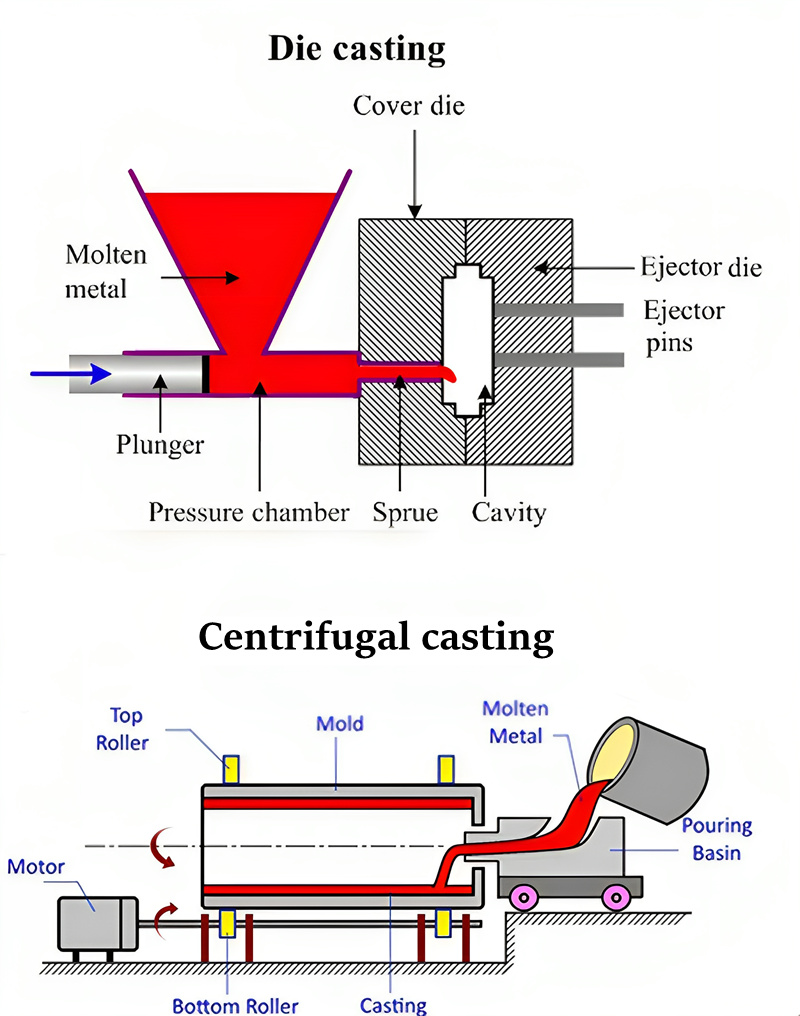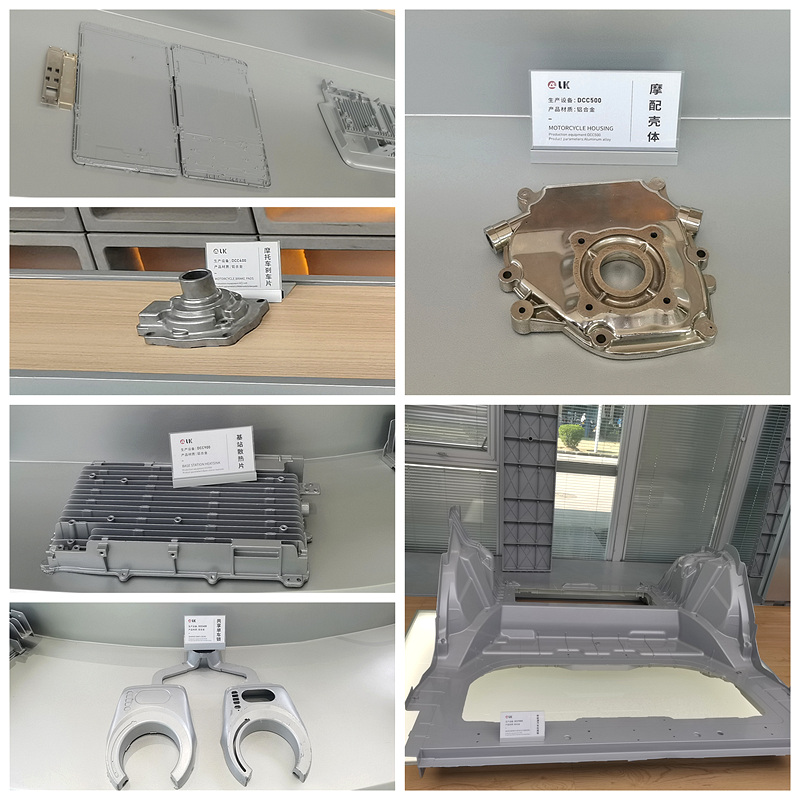Differences Between Die Casting And Centrifugal Casting
LK Die Casting Machine / 2025-02-26 11:45:29
Die casting and centrifugal casting are both casting processes, but they differ significantly in terms of their process characteristics and application areas. Each process plays a crucial role in the casting industry, and understanding their distinctions is essential for selecting the appropriate method based on specific production needs. Below, we will explore the key differences between these two processes.
Different Process Principles
Die casting is to inject molten metal into a cooled mold under high pressure. It is usually used to produce castings with more complex shapes, especially high-precision aluminum alloy or magnesium alloy parts. Its advantages are high production efficiency and good dimensional accuracy.
Centrifugal casting generates centrifugal force by rotating the mold to evenly distribute the metal liquid to the inner wall of the mold. It is usually suitable for round or symmetrical parts (such as pipes, shafts, wheel bodies, etc.). Its advantages are high density and uniform structure of the casting.

Different Applicable Materials
Die casting is generally used for metal alloys with low melting points, such as aluminum, zinc, magnesium, etc., and its process is commonly used to produce thin-walled small parts.
Centrifugal casting is suitable for cast iron, steel, copper, and alloy materials, especially for casting larger or thicker round or symmetrical structural parts, such as pipes, shafts, rollers, etc.
Production Cycle And Efficiency
Die casting is suitable for large-scale and efficient production, and can quickly produce a large number of fine small parts, but more post-processing may be required for complex shapes.
Centrifugal casting usually has a long production cycle, is mainly used for low to medium-batch production, and is suitable for the production of parts with relatively simple geometric shapes.
Die-casting Suitable Industry Applications
1)Automotive industry: It is widely used in the production of lightweight and complex parts, such as engine cylinders, cylinder heads, wheels, drive shafts, and car dashboards.
2)Electronic and electrical industries: It is mainly used in parts such as housings, casings, and radiators, such as aluminum alloy housings, radiators, switch housings, and LED lamp housings.
3)Communication equipment industry: It is used in the production of housings and parts of some high-tech equipment, such as aluminum alloy housings of mobile phones, tablets, and laptops, and housings of radio communication equipment.
4)Computer and office equipment industry: For example, metal housings of laser printers, server housings, and hard disk drive housings.

(These are product samples made by our die-casting machines in our factory.)
In short, die-casting technology is very common and is very suitable for the production of large-scale, high-precision metal parts such as aluminum alloys, magnesium alloys, and zinc alloys, especially for the production of parts that require lightweight, high-strength, and exquisite appearance in automobiles, electronics, electrical, communications, aerospace, and mechanical manufacturing. If you have specific product requirements and want to learn more about choosing a suitable die-casting machine, please contact us.
OTHER CONTENT
-

2024-09-19 14:16:15 LK Cold Chamber Die Casting Machine DCC900 Locking Force: 9000KN Die Height: 400-1000mm Space Between Tie Bars: 930x930mm Shot Weight: 13.5Kg Casting Area Max:2250c㎡
More -

2024-09-19 14:11:06 LK Cold Chamber Die Casting Machine DCC280 Locking Force: 2800KN Die Height: 250-650mm Space Between Tie Bars: 560x560mm Shot Weight: 2.9Kg Casting Area Max:700c㎡
More -

2024-09-19 10:23:07 LK Cold Chamber Die Casting Machine DCC580 Locking Force: 5000KN Die Heigh: 350-850mm Space Between Tie Bars: 760x760mm Shot Weight: 6.9Kg Casting Area Max:1250c㎡
More -

2024-09-19 10:11:20 LK Cold Chamber Die Casting Machine DCC400 Locking Force: 4000KN Die Height: 300-700mm Space Between Tie Bars: 669x669mm Shot Weight: 4.7Kg Casting Area Max:1000c㎡
More

